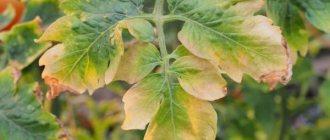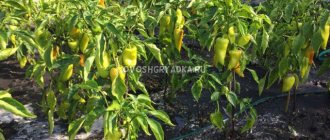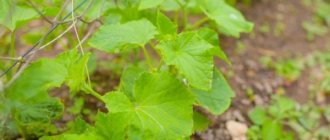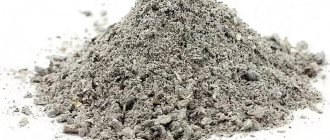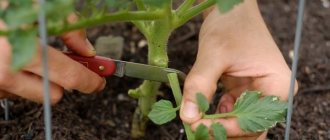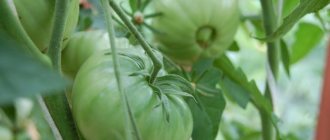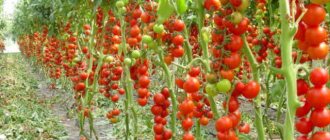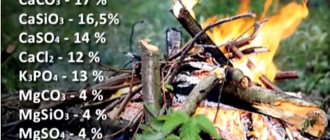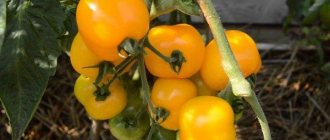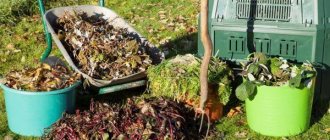Every gardener, having sowed seeds, dreams of getting strong, healthy plants. But sometimes dreams are not destined to become reality: the seedlings do not develop properly. Some people immediately give up, but this does not lead to anything good. Mistakes are repeated time after time, not giving young plants the opportunity to live a full life. There can be many reasons for failure. Why don’t the seedlings grow, what to do about it and how to prevent this from happening again? You will find answers to these questions in our article.
Rare shoots 2. No shedding of the seed coat 3. Yellowness of the leaves 4. Spots on the leaves 5. Stunted growth 6. Lack of nutrition 7. Stretching of the hypocotyledon 8. Damage by diseases and pests
Photo: Many mistakes when growing seedlings can be corrected in the early stages.
Unfriendly and rare seedlings: how to grow seedlings correctly
Sometimes a gardener observes unfriendly and sparse seedlings. There are several reasons why seedlings do not grow.
Poor quality seeds
Old, overdried seeds with low germination energy and germination capacity will not produce quick and friendly shoots.
Deep and uneven seed placement
In order not to make a mistake with the planting depth, you can follow a simple rule - you need to bury the seeds no more than two diameters. Seeds of nightshade crops - to a depth of 1–1.5 cm. It is better to mix small celery seeds with sand (1:1) and scatter them over the surface of the soil, mulching with the same dry substrate in which the planting material was sown, in a layer of no more than 0.5 cm Be sure to maintain uniformity of placement.
Too wet soil combined with high or low temperatures
Mature soil has a temperature of 18–20 °C and crumbles easily when forming grooves for sowing. The seed germination temperature for most seedling crops is 25 °C; after germination, it should be reduced to +16...+18 °C.
Soil contaminated with pathogenic soil microflora
They buy ready-made soil of good quality, or when making a soil mixture, compost and humus, which are added to peat, are sterilized: steamed or frozen. You can spill the soil with biological products.
Heavy and clay soil
It is necessary to take care of a high-quality substrate in advance. The soil mixture should be light, water- and breathable, and contain humus and minerals. For successful germination, it is necessary to water the substrate 2-3 days in advance so that excess water goes into the pan. The soil ready for sowing should not be wet, but moist.
Photo: Soil for young plants must be of high quality.
Crust on the soil
Seedlings have difficulty breaking through the crust on the soil, especially if the soil is heavy and watering is carried out too often. To avoid the need for them, before sowing the soil is evenly and moderately moistened, and after sowing the seeds, glass is placed on the container or film is stretched, then the need for watering is reduced to a minimum.
Lack of drainage holes in seedling containers
The planting containers must have holes for water drainage. After sowing, it is better not to water the soil, but to spray it so that a crust does not form. If the measures taken do not ensure the success of seedlings, then it is better to replant the seeds.
Excessive air humidity
Tomatoes love moist soil and moderately dry air. In the open ground of central Russia, the air can rarely be humid, unlike greenhouses and greenhouses. The microclimate in such structures must be regulated through regular ventilation. If the greenhouse is too hot and humid, then you can’t expect fruit, since the wet and sticky pollen will lose its flowability, gather in lumps without getting on the pistils, and the ovaries will not form.
To protect the leaves from direct sunlight, the sunniest side of the glass greenhouse is treated with a chalk solution.
If ventilation does not help, and it is still hot and humid inside the greenhouse or greenhouse, you can use ovary stimulants, which are available in an assortment at any specialized store.
Problem with seedlings due to yellowing cotyledon leaves
The plant gives a signal that it does not have enough light and nutrition. As a rule, at first it stretches out and lies down, and if the gardener does not react in time, it gradually turns yellow. After some time, the lower leaves die off, starting with the cotyledons. Using poor soil, not filled with organic matter, as a substrate, you can get just such plants.
Photo: Yellowing of the leaves indicates a lack of heat and light.
| Advice. If the seedlings show the slightest signs of yellowing, you need to increase the illumination, spacing out individual containers, and apply any complex fertilizer. |
How to feed pepper seedlings if they don’t grow
Normally developing seedlings have healthy green leaves without signs of pallor or yellowing. If it does not grow quickly, then this is not a reason for feeding. It is necessary to fertilize peppers if you are sure that the plants are not withering from an excess of nutrients.
Drugs
Experienced agronomists recommend starting to feed seedlings when 1-2 true leaves appear on the peppers. In this phase, fertilizing is carried out with a complex mineral fertilizer with a high phosphorus content. This element promotes the development of the root system.
To grow green mass, a complex mineral fertilizer with a high nitrogen content is required. If the peppers do not have enough of this substance, they will subsequently have weak leaves.
The next 2-3 feedings are carried out with a high nitrogen content at intervals of 10-14 days.
At the stage of flower initiation, budding and fruit formation, complexes with potassium are used.
Gumi can be used as an organic mineral fertilizer. It consists of 60% humic acids, which stimulate the growth of seedlings. The fertilizer also contains 2% nitrogen, 2% phosphorus and 1% potassium. The composition contains all the elements, the deficiency of which can adversely affect the development of pepper.
Gray specks and spots on leaves
These are burns. They appear when drops hit the leaf blades in bright sun. Therefore, it is advisable to water the seedlings carefully at the root.
Burns can also occur due to excessive intense and artificial lighting. In this case, the seedlings become toxic with their own photosynthetic products, which do not have time to be evenly distributed throughout the plants. It is necessary to reduce the duration of additional lighting to 12–14 hours a day.
Photo: Leaf spots can be overcome.
The seedlings have stopped growing
This phenomenon can be caused by two reasons:
- There is obvious stress - cold soil, air, irrigation water, as well as lack of nutrition. It is very important to follow all the rules of agricultural technology for each crop. Timely root feeding with macroelements (nitrogen, phosphorus, potassium) and foliar feeding with microelements, watering with settled water at a temperature not lower than +24 ° C will help correct the situation.
| By the way. The reason for the stunting of seedling growth may be acidic soil. Water the seedlings with calcium nitrate solution 2 times at the rate of 3 g per 3 liters of water. |
- If there was no decrease in temperature, then most likely there was a natural stop in growth after the picking. Injury to the axial root is a slight stress for the benefit of the future harvest. Seedlings grown without picking, although they enter the fruiting phase earlier, lose in terms of overall yield.
Picked plants stop growing. This is fine. It takes some time to restore the root system. For tomatoes it is 14 days, for peppers and eggplants it is 40 days. During this period, you should avoid feeding and stimulants - they can only aggravate stress. You should be patient, wait until the plant itself survives this difficult period, begins to grow, and then you can already use all the achievements of agrochemistry.
Why tomatoes don't grow well
The most common reason that tomatoes do not grow is errors in their cultivation .
What amateur gardeners most often admit:
| Error | A comment |
| Failure to comply with seed sowing deadlines | If tomatoes are planted late, the bushes will not have time to produce a full harvest before the onset of cold weather. If it is too early, the roots of overgrown plants in cramped conditions will not be able to provide adequate nutrition. The tomato will be stunted. Seedlings will take root worse after picking. |
| Violation of light and temperature conditions for growing | The optimal temperature for growing seedlings in good light during the day is 25-27 degrees, at night - 12-14 degrees. |
| Improper nutrition for plants | The main reason why tomato leaves begin to turn yellow or curl. If the plants do not have enough micro- and macroelements, the roots occupy the entire space of the peat planting pot and do not absorb the incoming nutrition well. Both excess nutrition and lack of it have an equally bad effect on tomatoes. Pay special attention to the soil. Its acidity should be close to neutral. Increased acidity of the soil has a bad effect on the plant. |
| Improper watering | Water the seedlings only with settled water at room temperature as the earthen ball dries out. Everyday watering is not necessary. The quality of seedlings is negatively affected by both soil drying out and waterlogging. |
| Random seeds | It is better to buy seeds from trusted sellers. Otherwise, the planting material may be expired or not correspond to the variety stated on the packaging. It is important to monitor the expiration date of seeds. |
| Incorrect dive and side steps | When picking, plants are often injured. Recovery takes time and slows down the growth of tomatoes. Often the plant is buried above the growing point. When picking, to avoid diseases, it is worth disinfecting the seedlings. Potassium permanganate (one gram per liter of water) will help. The main reason for incorrect stepsoning is untimeliness. Stepchildren should be removed when the shoot height is three to four centimeters, no more. |
| Infestation of pests or plant diseases | You should not wait until the tomatoes get sick or are attacked by pests (for example, aphids or caterpillars). It is better to carry out timely prevention - water or spray with special means. |
Seedlings grow poorly due to lack of nutrition
Chlorosis, marginal necrosis, and the appearance of pale and small leaves can be corrected by applying macrofertilizers at the root and spraying with microfertilizers.
| Good to know. 1 tsp. contains approximately 7–10 g of fertilizers, table - 23–33 g. Potassium fertilizers are heavier. |
For chlorosis, iron and magnesium are added (spraying); with a lack of potassium (marginal necrosis) - potassium sulfate. With weak growth and small pale leaves, calcium nitrate is added. Its one-time use on tomatoes and peppers during the seedling period, as well as 2 weeks after planting in the ground, gives good results.
The amount of mineral fertilizers can be reduced by 15–20% if applied with humates (1 teaspoon of dry humate per 10 l). If organic fertilizers are applied, the amount of mineral fertilizers is reduced by 1.5–2 times. Vegetables are watered with a 0.05–0.2% solution of monopotassium phosphate: seedlings in the phase of 2–3 leaves, 10–15 days after picking or planting in the ground (for the rapid development of suction roots).
| Advice. To obtain a 1% solution, add 100 g of fertilizer to 10 liters of water, 0.5% - 50 g, 0.2% - 20 g, 0.05% - 5 g. |
Eating disorders
In fertile and high-quality soil, tomato seedlings grow quickly. The first sign that something is wrong with the diet is usually the leaves:
- change in color from deep green to pale green, yellow, blanching of the plates, thinning of the shoots - lack of nitrogen;
- the leaves turn blue, “marble” spots form on the plates in the middle - magnesium deficiency;
- redness on the underside – lack of phosphorus;
- the plates curl - the plant lacks potassium.
Also, tomatoes do not grow if there is a lack of iron (leaf chlorosis, stunted growth). Having noticed changes in the color of the seedlings, it is necessary to promptly feed the tomato seedlings.
| Substance | What kind of feeding |
| Nitrogen | Complex fertilizers, urea (4-5 g of fertilizer are diluted per bucket of water) |
| Potassium | Ash (infusion), potassium sulfate (according to instructions) |
| Magnesium | Magnesium sulfate (15 g diluted per 5 liters) |
| Phosphorus | Superphosphate (dilutes 12 g per 10 liters) |
The hypocotyledonous knee is stretched
Typically, seedlings stretch out and lie down due to dense plantings, which means insufficient feeding area. If the seeds are of high quality and the seedlings are friendly and dense, the plants begin to compete for light, moisture and nutrition.
This phenomenon is easier to prevent than to correct. You should always sow the specified rate for each crop. Excess is permissible by no more than 5–10%. If, nevertheless, the crops turn out to be thickened, it is necessary to pinch out the excess plants at the soil level. This will provide an influx of fresh air, improve lighting and nutrition for each seedling.
If sowing is carried out in individual containers, you need to sow 2-3 seeds. After germination, weaker plants are removed.
Sometimes you can observe seedlings stretching even with optimal seeding rates. The reasons in this case may be the following: low light (including due to dirty window glass), excessive watering, high temperature. You can prevent seedlings from stretching by growing them on southern windows and using phytolamps with red and blue spectra. A prerequisite is moderate watering (1-2 times a week): when a thin crust of dried soil forms. You need to water along the edge of the container.
Photo: Pulling seedlings is difficult to correct, but possible.
| Recommendation. At the first signs of stretching, provide good lighting - at least 12-14 hours. Install reflective foil screens on the side of the window; watering is carried out only after lightly drying the soil through pallets or using a spray bottle. |
If the “adult” seedlings have become very elongated, they can be transferred to a large container and sprinkled with soil. The time required to grow new roots will slow down active growth. As a last resort, you can cut off and root the tops of tomatoes.
The top of the stem has become thinner
If after planting it becomes noticeable that the top of the stem has become thinner compared to its entire length, then this indicates a lack of nutrients.
Before a plant begins to bear fruit, it needs to have a well-developed above-ground part. Only in this case will tomatoes be able to reveal their full potential.
It is important to give such tomatoes nitrogen-calcium fertilizer. For example, using calcium nitrate. The combination of these two elements can give a good impetus to the development of the leafy stem mass.
If there are visible signs of nitrogen deficiency, one of the best natural fertilizers is herbal infusion.
To prepare a herbal infusion, 2/3 of any container is filled with herbs. Fill with water. Leave for at least 5-7 days. For greater effect, 2-3 weeks.
Adding sugar, yeast and lactic acid products to the herbal infusion reduces its effectiveness.
It is also useful to feed weak tomatoes by leaf feeding. To do this, it is better to choose a complex microelement preparation, the obligatory components of which are calcium and boron. Calcium will help prevent blossom end rot for plants. And boron will give impetus to flowering and fruit set.
To enrich the soil with microelements, you can use an infusion
of onion peels. To prepare it, 1-2 handfuls of husks need to be poured with 500 ml of warm water and left for 24 hours. A small amount of infusion can be used with each watering.
Diseases and pests
The most common seedling disease is blackleg. Its cause is too wet, cold or contaminated soil and lack of ventilation in the mini-greenhouse. Measures must be taken in a timely manner: remove diseased plants, stop watering and dry the soil, sprinkle the soil with calcined sand mixed with ash.
As for pests, the most dangerous enemies of seedlings are whiteflies, aphids and spider mites. Washing the leaves with water and hanging yellow glue traps (not effective against mites) helps. Prevention and the use of clean, non-contaminated soil, as well as quarantine measures when purchasing flowers and seedlings, are very important. A decoction of tobacco dust is used against aphids and whiteflies: 400 g of tobacco dust per 10 liters of water; leave for 24 hours, boil for 2 hours, strain and add 40 g of soap per 1 liter of broth.
So, we told you why seedlings don’t grow and how to fix it. We hope our tips were useful to you.
______________________________________________________________________________________________
Accelerating growth
Tomato seedlings are not developing, and planting time is running out. Emergency measures must be taken. There are rules that must be followed to avoid this problem.
- If tomato seedlings have stopped growing, the reason may lie in the wrong place. It should be warm and well lit.
- The soil is pre-roasted and watered with a solution of potassium permanganate. It should contain humus, peat and sand.
- Tomato and pepper seedlings do not develop well, which means it is necessary to regulate watering. You can use settled and warm water.
- In very hot conditions, additional spraying is required. This method will also help if the seedlings are very close to heating devices.
- Watering is important at all stages of care. After picking, tomato seedlings take root very poorly and do not grow, which means the soil was not sufficiently moistened and the roots were damaged. It is necessary to spray with activators. "Epin" is suitable for these purposes.
- After picking, the tomatoes weakened and stopped growing, probably the soil was not pressed sufficiently to the root. There is no need to compact the soil too much. It is enough to press the soil near the stem with your fingers.
- Folk remedies for strengthening plants recommend that if tomatoes develop poorly, water them with a mixture of milk and water. This will help prevent the occurrence of many diseases.
Knowing the reason why tomato seedlings do not grow, you can avoid their eventual loss. If measures are taken in time, the seedlings can be easily rehabilitated.
